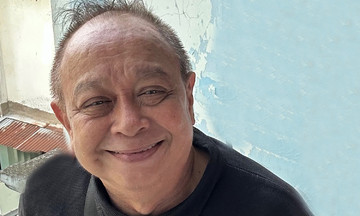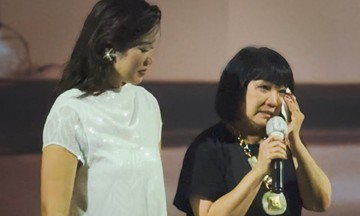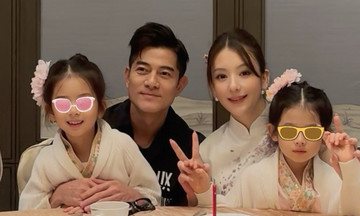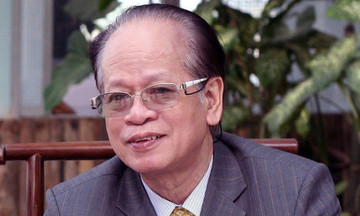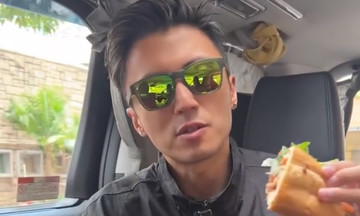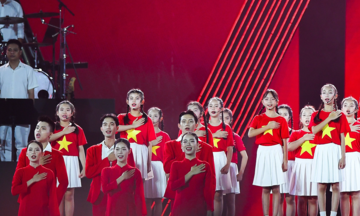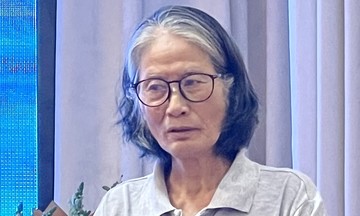On 1/6/1945, the Vietnamese Youth Federation was formed, uniting young people in the mission to liberate their country. During oath-taking ceremonies at Vuon Ong Thuong on 1/7 and 18/8 of the same year, the federation emphasized patriotism and the struggle to "secure Vietnam's independent position on the world stage." The organization adopted the yellow star on a red background flag as its banner, and the song ‘Len Dang’ by Luu Huu Phuoc and Huynh Van Tieng became its anthem.
Following its establishment, the Vietnamese Youth Federation became a widespread movement, extending from Saigon to provinces throughout southern Vietnam. During the fervent atmosphere of the August 1945 general uprising, the song resonated with the marching steps of over one million people from the city and surrounding provinces during a demonstration on 25/8.
In his book “Luu Huu Phuoc - The Man and his Career,” writer Mai Van Bo notes that with ‘Len Dang,’ Phuoc "brought young people to the glorious culmination of the General Uprising alongside other revolutionary forces.”
Phuoc composed the song in 1944, as the revolutionary movement gained momentum. The song has a marching rhythm with a fast, powerful tempo, incorporating traditional folk music elements with single-section forms of folk melodies such as Ly Ngua O and Ly Dang Bong. Poet Nguyen Dinh Thi once remarked, "Phuoc’s music is both robust and vibrant, deeply imbued with national character and southern Vietnamese colors, unmistakable in its style."
During the uprising, generations of young people sang to promote national spirit and foster patriotism. According to Mai Van Bo, they sang "to look towards the future with heads held high, recognizing the direction of history. Moreover, this singing occurred during the final, most exciting days of preparation for the uprising, ending 80 years of suffering.”
Tieng’s lyrics combined with the powerful melody urge young people to "join forces and embark on the journey," united in their efforts to enhance their nation. The author looks outward to the "globe, five continents," affirming the aspiration to integrate with the world. The song recalls resounding victories in Vietnamese history, such as the battles of Bach Dang and Chi Lang, encouraging young people to follow the indomitable examples of their ancestors. Vietnamese youth uphold the oath: "Our group holds in our hearts/The vow to sacrifice to the end" to protect the nation.
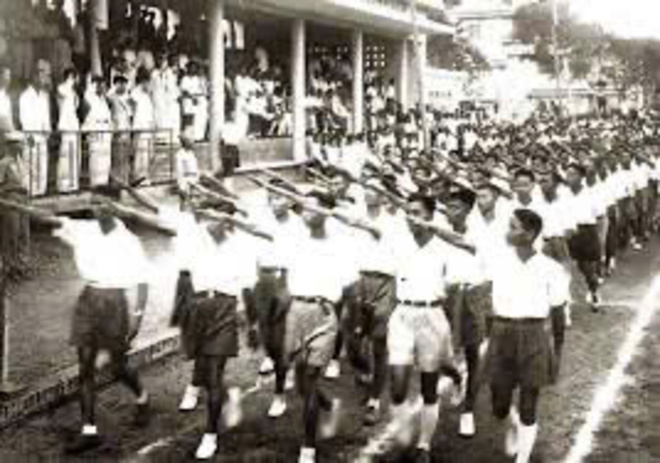 |
A parade of the Vietnamese Youth Federation. Photo: Archives. |
80 years later, the song continues to resonate across generations. At the ‘To Quoc Trong Tim’ concert on 10/8, singer Dong Hung performed a rock version, with 50,000 audience members singing along, a moment widely shared on social media.
Dong Hung expressed pride in singing the song with a younger audience. In his childhood, he heard older generations humming the tune, its melody deeply imprinted in his mind. As an adult and a performer, despite singing the song numerous times with various arrangements, his feeling remains unchanged, "always fervent." He believes the song retains its value for a generation born in peacetime: "In the past, our ancestors pledged to 'embark on the journey together.' Now, young people, with patriotic spirit, take action, cultivate knowledge, share, and spread the Vietnamese spirit to the world."
Today, ‘Len Dang’ is the anthem of the Vietnam Youth Federation, an enduring song. Phuoc’s name is synonymous with the youth movement and Vietnam's revolutionary music scene.
In “Luu Huu Phuoc - The Man and his Career,” Tieng commented: "Writing about Phuoc is to address a patriotic and revolutionary singing movement that Phuoc initiated. With his talent, from one song to another, he continuously nurtured it, making it a revolutionary force capable of mobilizing tens of thousands, hundreds of thousands of people. The resounding steps of millions of compatriots marching to the rhythm of ‘Len Dang,’ ‘Tieng Goi Thanh Nien,’ ‘Tam Muoi Nam’ shook the entire city."
Phuoc, born in 1921 and died in 1989, was self-taught in music theory and played several instruments from a young age. He used music as a weapon in the fight for national independence and freedom, his compositions reflecting the spirit of the times.
As a student, he wrote powerful songs like ‘Bach Dang Giang,’ ‘Hon Song Gianh,’ and ‘Hat Giang Truong Han’ (later ‘Hon Tu Si’). During the resistance wars against the French and Americans, songs like ‘Tien ve Sai Gon’ and ‘Giai Phong Mien Nam’ continued to inspire generations and urged the entire population to fight. He also composed numerous works about the unity between the army and the people, faith in the Party, and praise for President Ho Chi Minh, such as ‘Duoi Co Dang Ve Vang’ and ‘Tinh Bac Sang Doi Ta.’
Chau Anh




